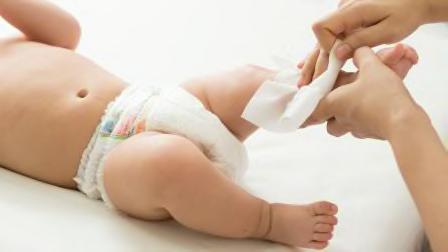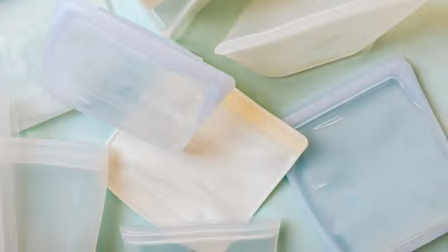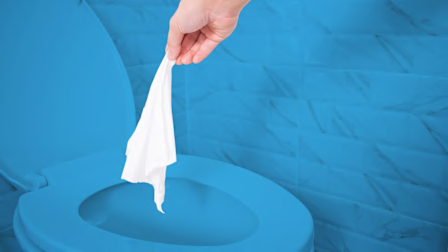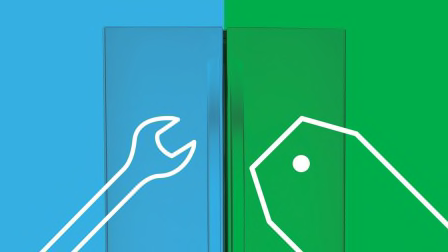Trashie Might Be the Lazy Person’s Key to Keeping Their Wardrobe Clutter-Free
Clothes-recycling services like Trashie and Retold aim to help you both create a more environmentally friendly wardrobe and make some 'money' in the process
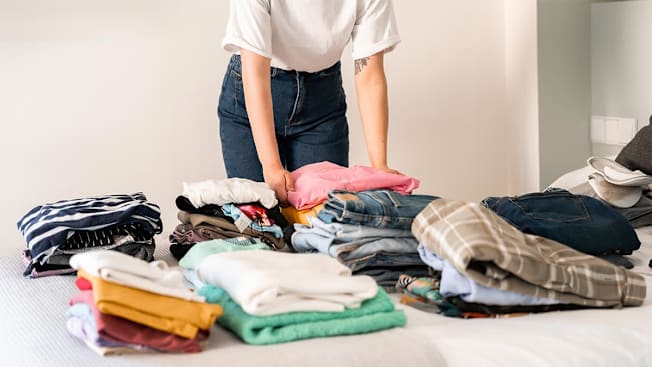
If I were to go through my closet and discard what I rarely wear—and frankly, it’s about half of it—I would have a considerable amount of clothing to get rid of. But the prospect of what to do with it is mildly overwhelming. I don’t want to throw it away because most of it is in good condition and pretty cute, too—nor do I want to add my clothes to the 17 million tons of clothing and textiles that Americans throw out each year. (Fun fact: Folks in the U.S. throw out 65 percent of their fast fashion clothing within the first year.)
- More on Clothes Recycling: Does Trashie Actually Recycle? How Textile Recycling Works What You Should Do About Your Old Clothes
Do Retold and Trashie Actually Recycle, and How Much Money Can You Earn?
Trashie and Retold are both relatively new concepts in the clothing recycling space. Instead of dropping your clothes off at a thrift store or municipal recycling center, you purchase a bag from the brand, which you then fill with clothes and send to the company to recycle.
Trashie’s bags range from $20 for one bag that takes up to 15 pounds of clothes (about the size of a large load of laundry) to $120 for six bags that fit up to 90 pounds of clothes in total.
Each Trashie bag is worth 30 “TrashieCash” points, which you redeem at a retailer listed on the brand’s deals site. For example, recycling with Trashie can get you $25 off $100 or more at clothing brand Richer Poorer, $22 off $100-plus orders at the baby hygiene brand HealthyBaby, or 50 percent off a $50 club membership at Sam’s Club.
Trashie sorts the clothes it receives according to condition. About 70 percent of what it receives is in good enough condition to be reused.
“On average, 40 percent of the clothing stays in North America, 15 percent goes to Central America, 7 percent to South America, 25 percent to South East Asia, 9 percent to Western Africa, 1 percent to Eastern Africa, and the remaining 3 percent representing small fluctuations month-to-month and rounding,” a Trashie representative told Consumer Reports.
“About 20 to 30 percent of what we receive is not in reusable condition and must be recycled into other materials.” Trashie says it meticulously tracks where clothing ends up, with agreements in place that ensure clothing ends up where Trashie expects it to.
Around 5 percent of it is sent to domestic landfills because it’s in poor condition, such as being contaminated with oil or blood (gross). The rest, the brand told Consumer Reports, Trashie is able to find a use for, even if it’s a lower-tier brand or fabric.
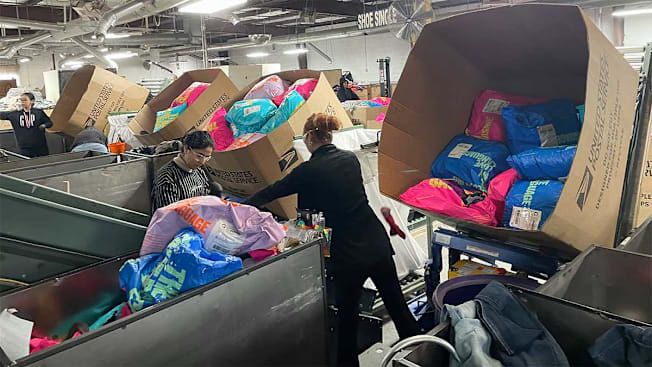
Photo: Trashie Photo: Trashie
To recycle clothes with Retold, users purchase bags from the company—ranging from $15.50 for a single bag that holds up to 5 pounds of textiles (about what you can scoop up in an armload) to an annual subscription of a bag each quarter (plus three out the gate) for $94.
Retold then sorts the clothes, sending high-quality items for reuse and scraps sent to recyclers to be reprocessed; textile scraps, like those used by crafters, are sent to Retold separately from your regular clothes.
According to Retold, the only items it (or the partners it works with) sends to landfill are dirty clothes or clothing hardware such as zippers. Items that are sorted for reuse but remain on the rack without any indication that they’ll sell get rerouted for downcycling, Retold told Consumer Reports.
“Downcycling” is a term that refers to products that get reprocessed into lower-quality materials; in textiles, specifically, that could result in old clothes that get turned into insulation or furniture stuffing. According to Retold, even cheap polyester garments are able to be downcycled. Only items that are soiled or that Retold is unable to recycle, such as leather, coated textiles, and neoprene, end up in landfills.
If you subscribe to Retold for a year, you earn “up to $90 in value” in the form of discounts with Retold partners. Examples include $15 off your first $30-plus Dropps order or $10 off a purchase of $65-plus at the children’s hat and beachwear company Flap Happy. Only Retold subscribers earn rewards.
How Textile Reuse and Recycling Works
Textile recycling is a complicated business. There are two primary modes of recycling fabrics: mechanical and chemical. With mechanical textile recycling, which is the main way textiles get processed for recycling, “the original fabric is basically destroyed. It’s kind of shredded to get back to the fiber stage,” says Kathryn Reiley, a faculty lecturer of apparel design and retail at the University of Minnesota College of Design. “Then they can use those fibers again to make new yarns, and then make a new fabric.”
Chemical textile recycling uses chemicals to pull the fabric apart and put it back together in the form of new fabrics. Most chemical recycling is done in small, limited settings, and isn’t yet available at scale, according to a 2024 report from the Government Accountability Office (GAO).
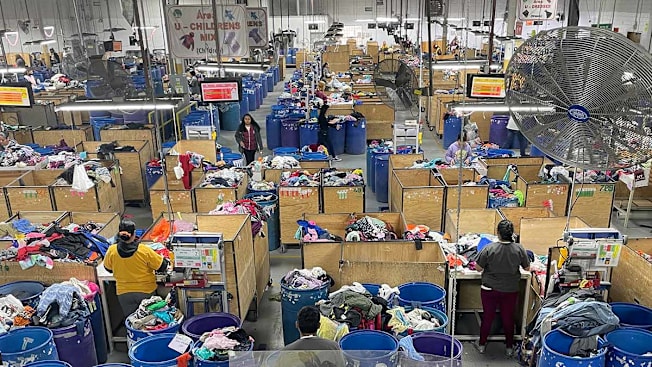
Photo: Trashie Photo: Trashie
These processes are imperfect. Mechanical processing isn’t able to break apart every type of fabric and works best at deconstructing clothing that’s 100 percent one type of fabric, such as 100 percent cotton, silk, wool, or polyester.
“With textiles, part of the problem is a lot of the fabrics are blends—there’s a lot of polyester blended with cotton,” says Reiley. “If you’re trying to recycle that material, it’s hard to get the cotton and the polyester separated again, to reuse only the cotton to make a recycled cotton fabric.”
Chemical processing is promising, but it’s still very much in development, and is expensive to implement. But that’s not perfect either, says Reiley, because it requires toxic chemicals that can end up in the air, water, and soil.
Reuse, of course, doesn’t require that kind of processing; the clothes get sorted out and, says a Trashie representative, sent to wherever they’re most likely to be worn, often based on seasonality. But—of course there’s a but—issues crop up with reuse, as well.
“Large numbers of discarded clothing from the United States are shipped to [developing] countries, and then it piles up there and they really don’t necessarily want it,” says Reiley. “A lot of those countries already have their own textile and clothing industry to produce their own clothing, and so they really don’t need our discarded secondhand clothing.”
A 2024 report from Greenpeace found that in 2022, 134,409 tons of used clothes were imported into Ghana; much of what’s left for reuse, however, is in fact unsellable, either lacking functionality for the local market (such as an incorrect season) or is in poor condition.
These clothes are thrown in landfills or burned, which causes severe, harmful contamination of water, air, and soil. “What was once a reasonable system of reusing secondhand clothes that had value to the market in Africa has spun out of control, because of the fast fashion business model,” says the report. And resellers in Africa are operating on increasingly tight margins because the clothes they receive are of increasingly lower quality.
“There’s never a perfect solution,” Reiley says.
So . . . What Are You Supposed to Do?
I had all of these concerns in mind as I researched Trashie and Retold. Is it even worth recycling my clothes at all—paying to recycle my clothes, in fact—if there’s a possibility that it could contribute to that kind of harm?
Trashie and Retold, for their part, gave me some reassuring answers. “We sort the clothing with a high degree of precision, so we know what we are sending, who is receiving it, and for what purpose,” a Trashie rep told me. “This is a very complex process, which ensures Trashie knows where everything is going.”
On its website, Retold writes that recyclers aren’t inclined to throw products in the trash because it would be a revenue loss. “Since both parties profit from downcycling, it ensures that these materials avoid the landfill, except in rare cases where we receive materials we cannot recycle,” a rep for Retold wrote to me in an email.
According to Environmental Protection Agency data from 2018, Americans tossed nearly 11 million tons of used clothing and footwear, which in my mind makes even imperfect reuse and recycling a lot better than nothing.
Sending your clean clothes to companies like Trashie or Retold can help keep at least some of them out of landfills, even if there’s no guarantee that 100 percent of them are going to be recycled or reworn. For the clothes taking up valuable closet space in your closet, recycling your clothes with companies that aim for transparency is (probably) a net good.
Moving forward, there’s an even better solution: Buy less stuff. For the stuff you do buy, buy quality—it’ll last longer and be worth more in the reseller’s market, whether you want to resell it on Poshmark or The RealReal, or recycle it with a company like Trashie, which will find a reseller that would more greatly benefit from higher-quality clothing.
If paying more out of the gate is hard to stomach (I get it!), buying used clothing is a fantastic way to ensure you’re not contributing to a harmful, never-ending cycle of consumption. “The most sustainable thing is really to buy secondhand and vintage clothing, so that you’re not buying new mass-produced clothing and you’re just continuing to feed that cycle of producing more and more clothing,” says Reiley. “What I love about vintage is the fabrics are better quality than the fabrics that are being produced now.”
Want to shop for clothes more sustainably?
My favorite item of clothing I’ve bought in the past couple of years is a gorgeous leather jacket from the brand Theory. It fits perfectly, and the quality is undeniable—I feel like a million bucks when I wear it, though I purchased it for just over $100 used. That new faux leather and tweed bomber I bought from a fast-fashion-brand-I-won’t-name? It lasted two years before the fake leather started to fray, to the point where I don’t even want to donate it. And it cost just about the same as that new jacket that’s already lived a full life before ending up in my closet.
I plan to sort through that pile of old clothes, selling a handful of items to The RealReal, and either give the rest away in my local community Facebook and WhatsApp Buy/Sell/Give groups or send it off to Retold or Trashie, where hopefully it’ll find a new home in some form. Some of it, undoubtedly, will end up in the trash, whether I’m the one throwing it away or the recycling company is. And in the future, I’m going to focus on filling my closet with better-quality clothing: hopefully used, possibly new, and likelier easier to resell, too. I’ll feel cuter, anyway.

















